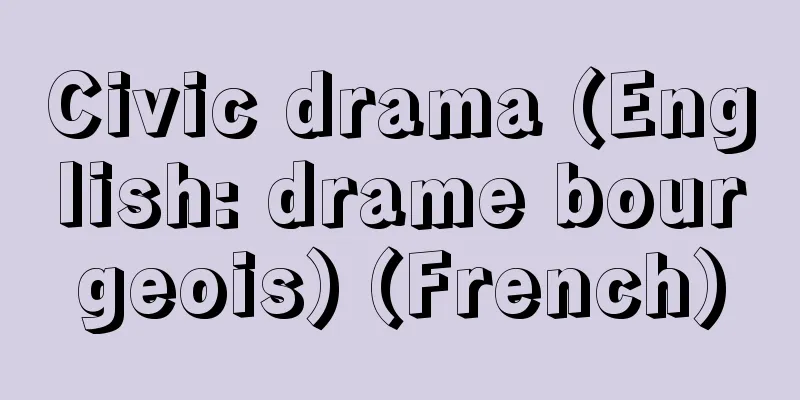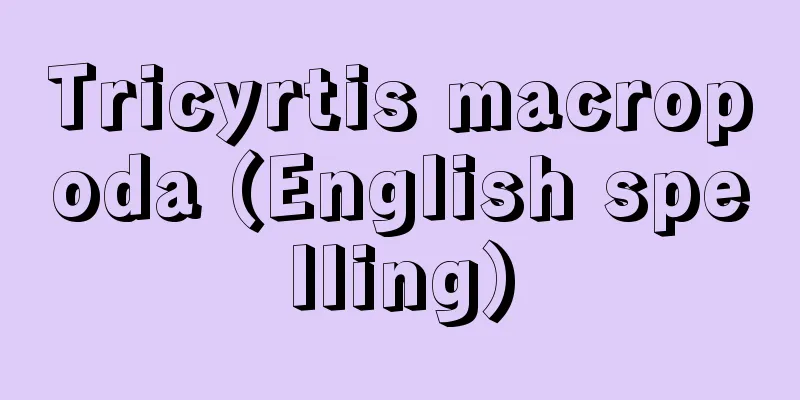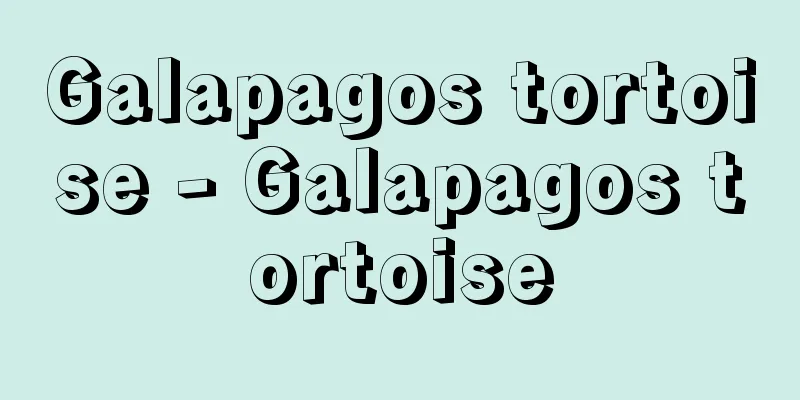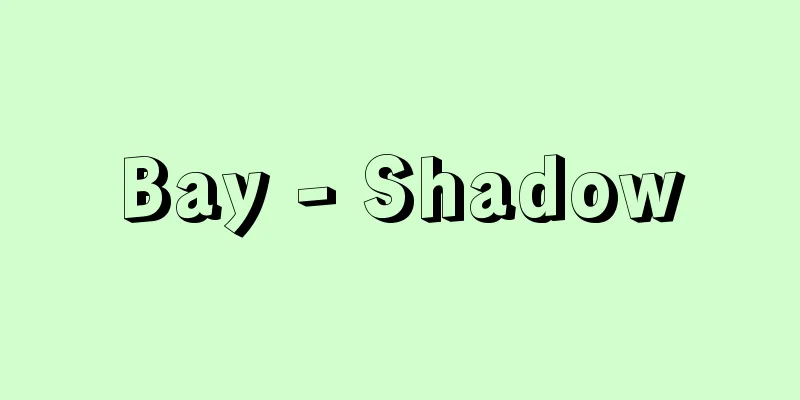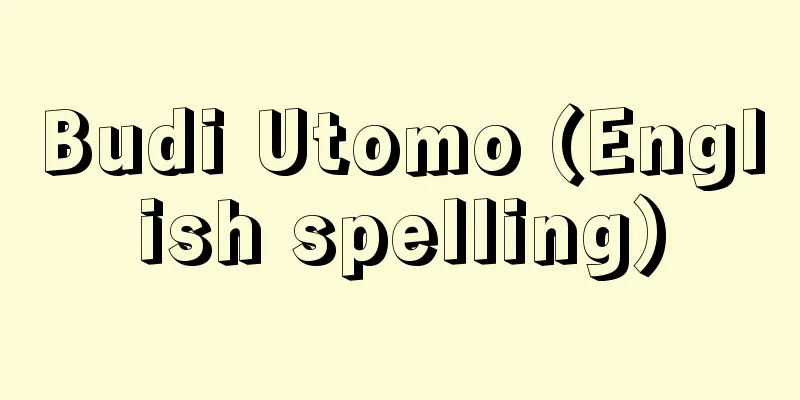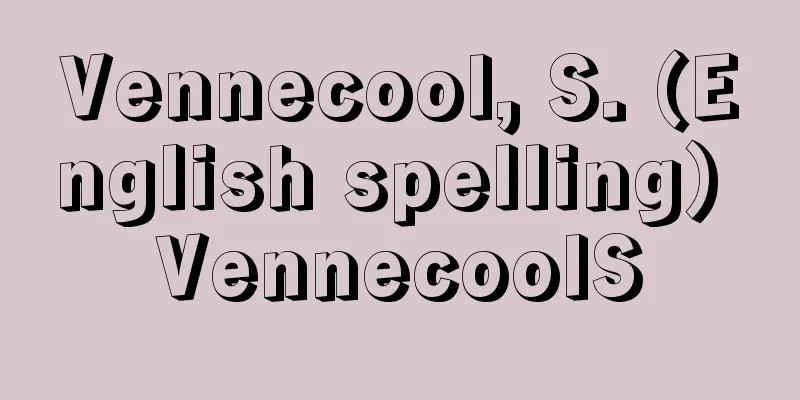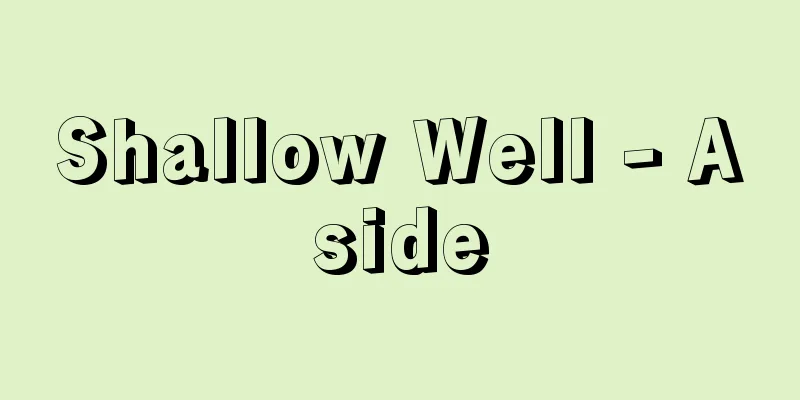Meridians -

|
This refers to the functional communication system of acupuncture points, which are considered important in the theoretical system of physical therapy in Oriental medicine (Chinese medicine), especially acupuncture and moxibustion treatment. In classical Chinese theory, the human body is considered to be a small natural entity within the greatness of nature. Therefore, the five elements (elements meaning all changing existences) of wood (plants), fire (heat), earth (soil), metal (minerals), and water (liquid), which are components of the natural world, take the form of the organs of the human body and form the basis of the human life form. These are the so-called five internal organs and six bowels (actually the six internal organs and six bowels). The six internal organs are the liver, heart, spleen, lungs, kidneys, and pericardium, and the six bowels are the gallbladder, small intestine, stomach, large intestine, bladder, and triple burner. The kidneys and spleen mentioned here are unique names for organs in traditional Chinese medicine that are different from the modern concepts of kidney and spleen. These organs are thought to be assigned to earth (spleen and stomach), metal (lungs and large intestine), fire (heart and small intestine), and water (kidneys and bladder), and the health of the human body is maintained by the balance of the functions of each organ. Furthermore, just as the natural world has a cycle of spring, summer, autumn, and winter, 12 months, and 365 days, the human body must also have a circulatory system that supplies each of the six internal organs with "energy to live" in order to maintain their normal functioning, and this energy is called "qi and blood." The meridians are the circulatory system for this qi and blood. There are 12 main meridians (and 8 extraordinary meridians, meaning meridians different from the main meridians) in the whole body, and 365 acupuncture points are said to exist on these 12 main meridians, which are assigned to the 12 months, or 365 days, of nature. If the circulation of qi and blood is normal with a constant rhythm, the human body is healthy, but if the circulation is stagnant, illness occurs. An excess or deficiency of qi and blood is likely to occur in the meridians, and the acupuncture points on each meridian can quickly detect such phenomena. For this reason, the meridians are named after the organs they go through, such as the Liver meridian, Gallbladder meridian, Heart meridian, Small intestine meridian, Spleen meridian, Stomach meridian, Lung meridian, Large intestine meridian, Kidney meridian, Bladder meridian, Pericardium meridian, and Triple Burner meridian. The circulating meridians are shown in the body cavities and on the surface of the body, from the head to the toes, or from the chest to the fingertips, with acupuncture points scattered along these meridians. In this light, it can be said that the meridians in classical Chinese theory are primarily thought of as a system of fluid passages through which the energy Qi and blood flows, rather than as a system for transmitting stimuli. The "jing" in meridians refers to the vertical meridians, and the "luo" refers to the system of veins that connect the meridians horizontally; collectively, these two are called meridians. A detailed explanation of meridians is "The Manifestation of the Fourteenth Jing" written by Hua Boren during the Yuan dynasty. This book consists of three volumes, an upper, middle and lower volume, with the meridians being described in detail in the middle volume and containing numerous illustrations. "The Manifestation of the Fourteenth Jing" was also introduced to Japan, where a Japanese translation was also produced, and it became widely used as a favorite book for acupuncturists. [Katsusuke Serizawa] Study of MeridiansSince the Meiji period, there has been much debate in Japan about whether these meridians actually exist. Some theories suggest that the meridian system is a deformed pattern of what is called the head belt in Western medicine (a phenomenon proposed by British neurologist Henry Head, in which visceral diseases cause hyperesthesia in certain areas of the skin), others suggest that it is a temporary line connecting acupuncture points, and, based on the premise that acupuncture points exist but meridians do not, the Ministry of Education suggested that acupuncture points be renamed as "points," limiting the number of acupuncture points on the whole body to 120, and that these be used as teaching materials for training acupuncturists. Eventually, in the early Showa period, a movement to restore traditional Chinese medicine arose, and "meridian therapy" was systematized from the viewpoint that acupuncture and moxibustion treatment is based on the meridian and acupoint system, and strong criticism was directed at treatment that neglected the meridians and was based on the Western medical perspective. Furthermore, after the Second World War, the research direction, which had been found to have a serum immunological effect even when acupuncture treatment was performed randomly and indiscriminately without selecting acupuncture points, shifted to a direction of serious efforts to elucidate the true nature of meridians and acupuncture points. In line with this, in clinical practice, the selection of acupuncture points, as well as prescriptions and treatments, began to be emphasized. Eventually, it was discovered that the electrical resistance of the body surface parts that correspond to traditional acupuncture points was lower than that of other body surface parts. The Physiology Department of Kyoto University reported experimental results showing that while the skin is not a good conductor of electricity, electricity flows easily through acupuncture points, and that when these low-resistance parts are connected in a line, a meridian-like pattern appears in the human body. These are called Ryodoraku and Ryodouten, and they were discovered using a device (neurometer) that measures points of low electrical resistance on the skin. Based on this data, Nakatani Yoshio proposed a new "Ryodoraku treatment". This provided a guideline for selecting acupuncture points, and has played a pioneering role in the acupuncture treatment currently performed in medical institutions nationwide. Separately, the Kanazawa University Pathology Department (Professor Ishikawa Tachio) demonstrated that when there are points with low electrical resistance on the surface of a living body, there is an abnormality in the internal organs that are closely related to the autonomic nervous system (especially the sympathetic nervous system) of that area, and they called these electrodermal points and the measuring device an electrodermal meter, and used them in clinical applications. There are still many theories about the meridian system, and its true nature has not been fully elucidated, and its morphology is unknown; however, most acupuncture and moxibustion clinical experts agree that it does exist clinically and phenomenologically. [Katsusuke Serizawa] "The Definitive Acupoint Illustrated Guide" by Katsusuke Serizawa (1985, Shufunotomosha)" ▽ "Meridian Therapy and Acupuncture" by Akisuke Okada (1997, Taniguchi Shoten)" ▽ "Clinical Meridians and Acupoint Illustrated Guide, 2nd Edition, by Jun Yamashita (2003, Ishiyaku Publishing)" ▽ "Basic Acupoint and Meridian Map of the Human Body" edited by Toshio Ichikawa (2003, Kinensha) [References] | | | |"・" indicates an acupuncture point ©Shogakukan "> Acupuncture and moxibustion meridians and acupoints diagram Source: Shogakukan Encyclopedia Nipponica About Encyclopedia Nipponica Information | Legend |
|
東洋医学(中国医学)における物理療法、とくに鍼灸(しんきゅう)治療の理論体系として重要視される経穴(けいけつ)(つぼ)の機能的な連絡系をいう。中国の古典理論では、人体は大自然のなかの小自然的な存在としてとらえられている。したがって、自然界の構成要素である木(植物)、火(熱)、土(土壌)、金(鉱物)、水(液体)の五行(ごぎょう)(行とはいっさいの移り変わる存在の意)は、そのまま人体の臓腑(ぞうふ)の形となって人間という生命体の基本をなすこととなる。これが俗にいう五臓六腑(実際には六臓六腑)である。六臓とは肝、心、脾(ひ)、肺、腎(じん)、心包(しんぽう)をいい、六腑とは胆(たん)、小腸、胃、大腸、膀胱(ぼうこう)、三焦(さんしょう)をいう。なお、ここでいう腎、脾とは、現在でいう腎臓、脾臓という概念とは異なる東洋医学的な独特の臓腑名である。これらの臓腑は、土に脾・胃が、金に肺・大腸が、火に心・小腸が、水に腎・膀胱が配当され、さらにそれぞれの臓腑の機能の和によって人体の健康が保たれるという考え方である。 さらに、自然界に春夏秋冬、12か月、365日の循環があるように、人体にも、前述した六臓六腑の機能の正常な営みを保つために、それぞれの臓腑に「生きるためのエネルギー」を供給する循環系があるはずとし、このエネルギーを「気血」とよんでいる。経絡とは、この気血の循環系ということになる。 この経絡は全身で正経12(ほかに奇経8。奇経とは正経とは異なる経の意)があり、この正経12の経絡に経穴が365あるとし、大自然の12か月、365日に配している。そして、気血の一定のリズムによる循行が正常ならば、人体は健康であり、循行が留滞すると病気になる。この気血の過不足、留滞などは経絡におこりやすく、また、こうした現象をいち早くみつけることのできるのが、それぞれの経絡にある経穴である。このため経絡には、肝経、胆経、心経、小腸経、脾経、胃経、肺経、大腸経、腎経、膀胱経、心包経、三焦経というように、それぞれの経絡が巡る臓腑の名称がつけられている。この臓腑を中心に、頭から足先まで、あるいは胸から指先までの体腔(たいくう)内や体表上に定められた循環経絡が示されていて、この経絡上に経穴が点在している。 こうしてみると、中国の古典理論でいう経絡とは、刺激を伝える系統というよりも、気血というエネルギーの流れる流体通路系という考え方が主となっているといえる。経絡の経とは、縦の経脈であり、絡とは、経脈と経脈を横に結ぶ脈系で、この両者を総合して経絡とよぶ。経絡の詳しい解説書は、元(げん)の時代に滑伯仁が著した『十四経発揮』である。この書は上、中、下の3巻からなり、経絡については中巻に詳述されており、図解も豊富である。『十四経発揮』は日本にも伝わり、和訓書もでき、鍼灸家の座右の書として大いに普及した。 [芹澤勝助] 経絡の研究こうした経絡が実在するかどうかという議論が、明治以降の日本では盛んに行われてきた。経絡系は、西洋医学でいうヘッド帯(イギリスの神経学者ヘンリー・ヘッドHenry Headが提唱した、内臓疾患が一定の皮膚領域の知覚過敏となる現象)の変形パターンとする説、経穴を結ぶ仮線であるという説、経穴は実在するが経絡は実在しないという前提から、経穴を孔穴と改称し、全身120の経穴に限定し、これを鍼灸師養成の教材とするよう指導した文部省の見解などがこれである。やがて、昭和の初期になると、漢方復古運動がおこり、鍼灸治療は経絡経穴系を基本とする治療であるという視点から「経絡治療」の体系化が行われ、西洋医学的な立場をとる経絡軽視の治療に強い批判が向けられた。さらに第二次世界大戦後になると、経穴を選ばず任意・無差別に鍼灸治療を行っても、血清免疫学的に効果があるというような研究方向が、経絡、経穴の本態解明に向けて本格的に取り組む方向に転換されていった。これにあわせて、臨床面でも、経穴の選定、さらにはその処方と治療といった面が重要視されるようになった。やがて、古来の経穴にあたる体表部位の電気抵抗を測定すると、他の体表部位のそれよりは低いということがつきとめられた。本来、皮膚は電気を通しにくいが、経穴では電気が通りやすく、この電気抵抗の低い部分を線状に結ぶと経絡様のパターンが人体に出現するという実験結果が京都大学生理学教室から報告された。これを良導絡、良導点とよび、これらは、皮膚の電気抵抗の低い点状部位を測定する装置(ノイロメーター)によって探索された。このデータを基に、中谷義雄は新しく「良導絡治療」を提唱した。これによって経穴の選定に一つの目安ができ、現在、全国の医療機関で行われている鍼(はり)治療の先駆的な役割を果たしてきた。これとは別に、金沢大学病理学教室(石川太刀雄教授)は、生体の体表面で点状に電気抵抗の低い部位があると、その部位の自律神経系(とくに交感神経系)と関連の深い内臓に変調のあることを実証し、これを皮電点、測定器を皮電計とよび、臨床応用に活用した。 経絡系については現在なお諸説があり、本態は解明されておらず形態的にも不詳であるが、臨床上、現象論的には実在するというのが鍼灸臨床専門家の大方の見解である。 [芹澤勝助] 『芹澤勝助著『定本経穴図鑑』(1985・主婦の友社)』▽『岡田明祐著『経絡治療と鍼灸』(1997・たにぐち書店)』▽『山下詢著『臨床経絡経穴図解』第2版(2003・医歯薬出版)』▽『市川敏男監修『基本人体ツボ経絡図』(2003・金園社)』 [参照項目] | | | |「・」は経穴を示す©Shogakukan"> 鍼灸の経絡および経穴図 出典 小学館 日本大百科全書(ニッポニカ)日本大百科全書(ニッポニカ)について 情報 | 凡例 |
Recommend
Zōpyros (English spelling)
… [Western] The origins of physiognomy in the Med...
Athanasius
A church father and theologian of the ancient Chri...
Soban - Soban
〘noun〙① A metal plate that is struck together at B...
Nanjing Massacre
Three incidents in China-Japan relations occurred...
Foreign cells
...The root nodules of legumes contain a pigment ...
Colored chalk
…After World War II, the practice of dyeing dark ...
National Socialist Party
A political party founded in 1905 by Yamaji Aizan,...
RS code - RS code
…The search for an ideal code that would achieve ...
History of the old French political system
…His early work, La cité antique (1864), caused a...
palace
…In some cases, it is considered to be of the sam...
Australian pitcher plant
A perennial carnivorous plant of one genus and one...
Technology-intensive industry
...(1) Classification based on the use of goods: ...
Medical Chemistry - Iryokagakuha
He is known for naming the gas generated by combu...
Beautiful writing - Bibun
In a broad sense, it refers to a style of writing...
Newari (English spelling)
…This multi-layered nature is also seen in the ur...
